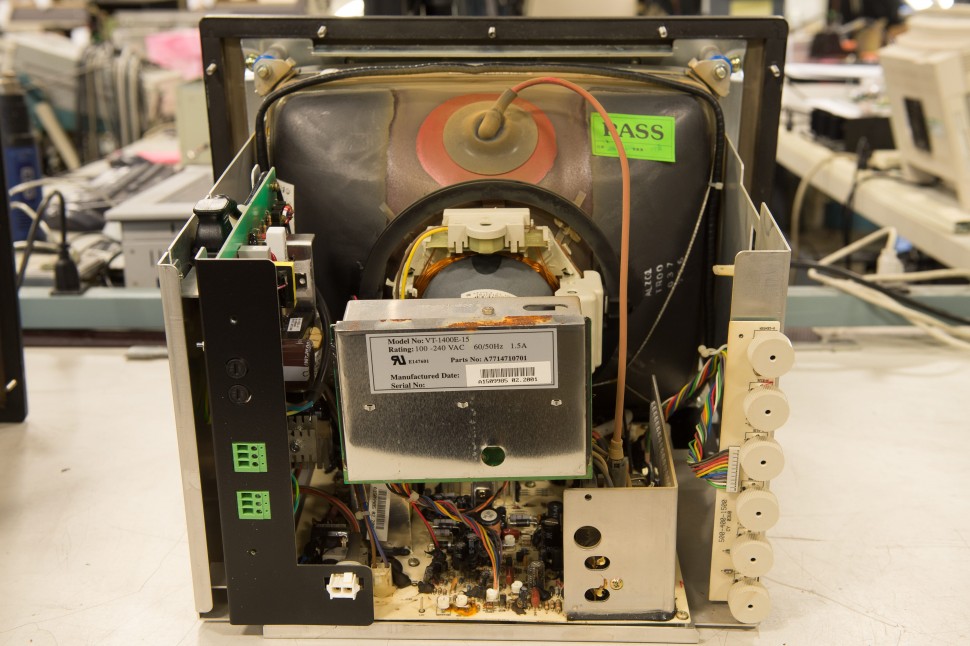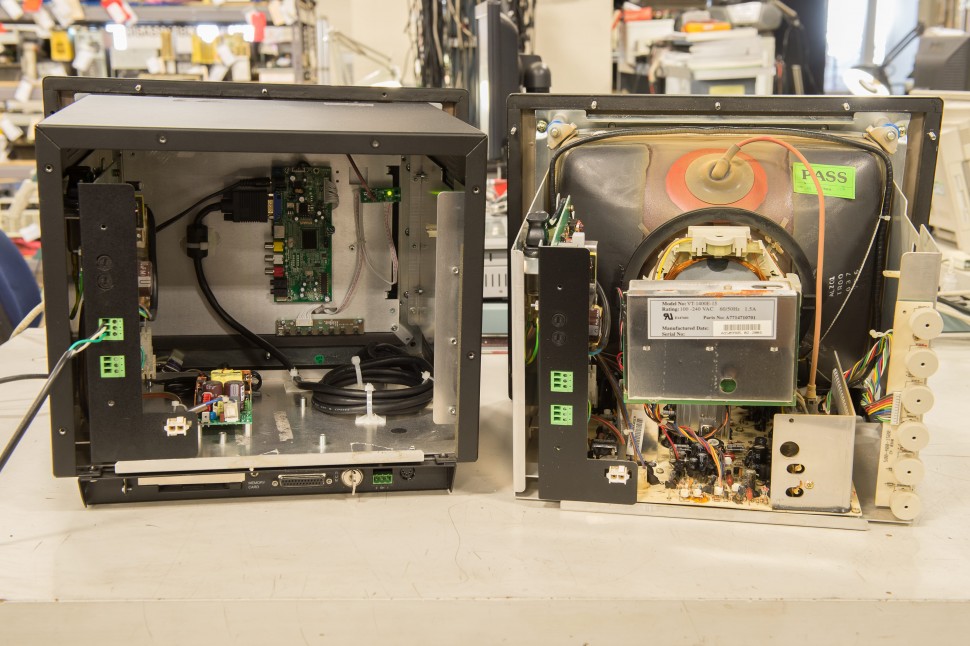The difference between an LCD and a CRT industrial monitor
LCD stands for “liquid crystal display,” while CRT is “cathode ray tube.” LCD is newer while CRT is an older technology. In a color CRT computer monitor, a metal filament is heated, causing the surface of the filament to emit electrons. These electrons accelerate by an electron gun fired at the screen. The inside of the display becomes coated with “phosphors,” or materials that emit light when they are exposed to radiation, such as ultraviolet light or electrons. By controlling which pixels glow, the CRT produces images, in a similar manner to how dots on a newspaper page make up pictures. By contrast, LCD works by filtering. A lamp or series of lamps that emits light, usually white light, placed behind the screen. Each pixel on the LCD screen is capable of filtering out many different wavelengths of light. By filtering specific wavelengths of light, the pixel can be changed to many different colors. By controlling which pixels filter certain wavelengths, the LCD can generate colored images.
CRT Health Hazards
Flickering display screens can cause headaches. They can also cause asthenopia or eye strain; this is the sore feeling a person gets in the eyes after looking at a flickering screen for too long. CRT monitors flicker because they rely on a scanning electron beam to create images. By contrast, flickers don’t occur on LCD screens, because they work by filtering a constant light source. Additionally, CRTs require care in handling because there is a small chance that the CRT will implode. If the CRT tube does implode than it will become fragment into many pieces, and then the broken apart tube will fly in all directions like shrapnel. LCDs, on the other hand, do not pose this hazard.

Other Benefits of LCD
LCD screens are less fragile than CRT screens and use less electricity. With the acquired energy efficiency that is allocated to repairing, replacing, and powering the CRT screens would create savings. LCD screens are also free of “burn in,” or the tendency of CRT monitors to become damaged when an image displays for too long. Additionally, CRT screens are often distorted at the edges because the beam of electrons that makes the phosphors glow is not perpendicular to the screen at the edges. As the beam becomes more tangential to the screen, geometric distortion occurs. However, similar issues do not occur with LCD displays.








